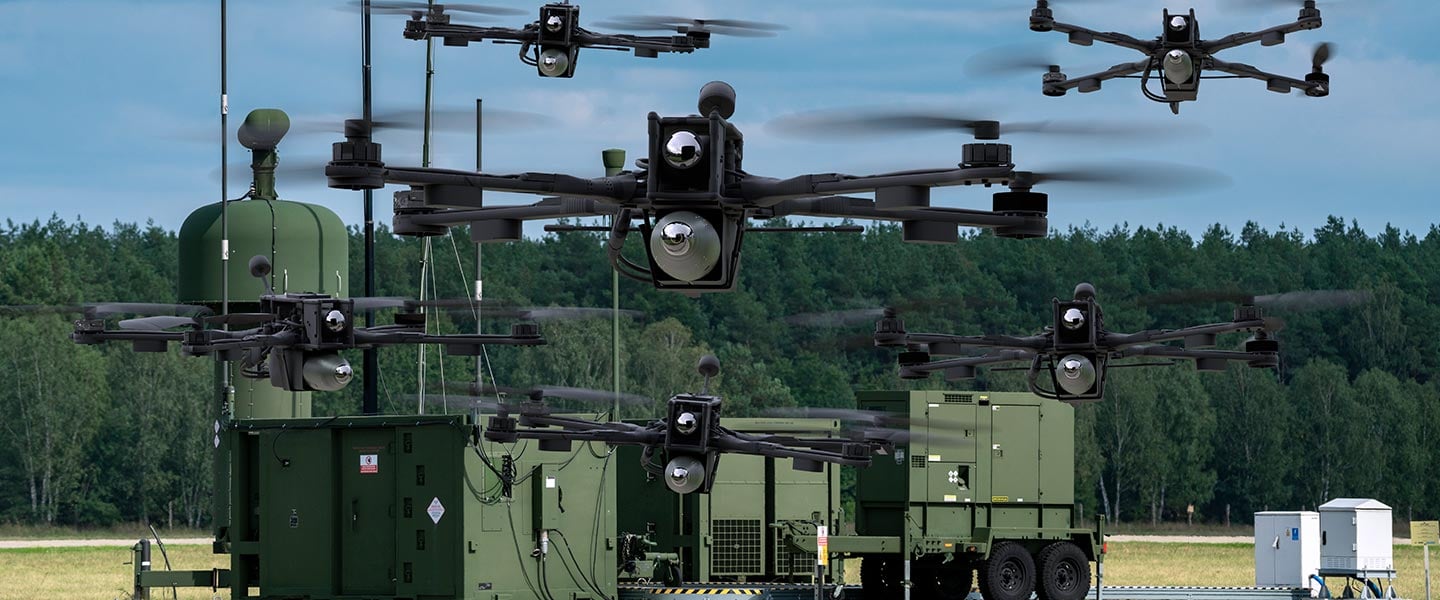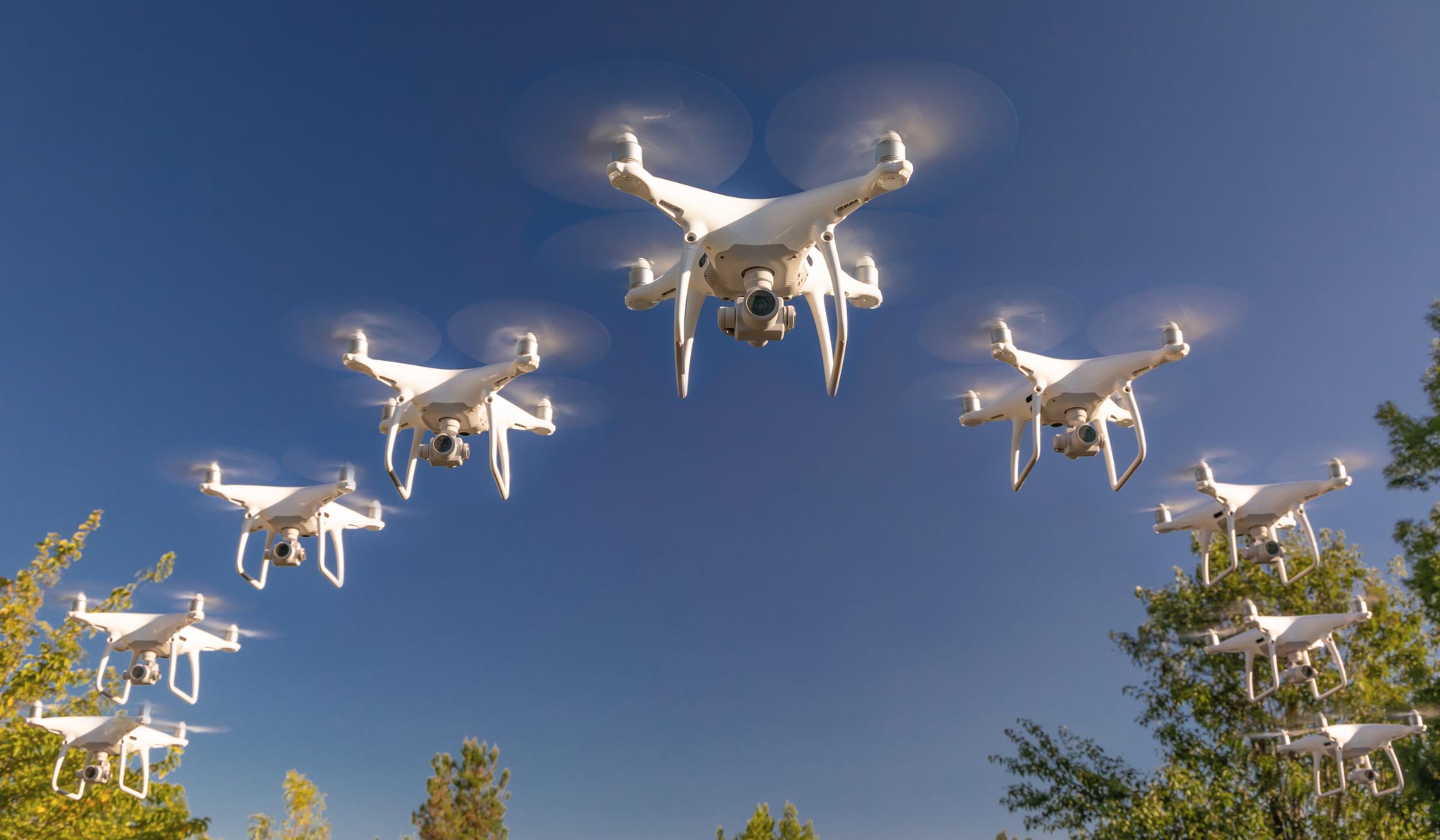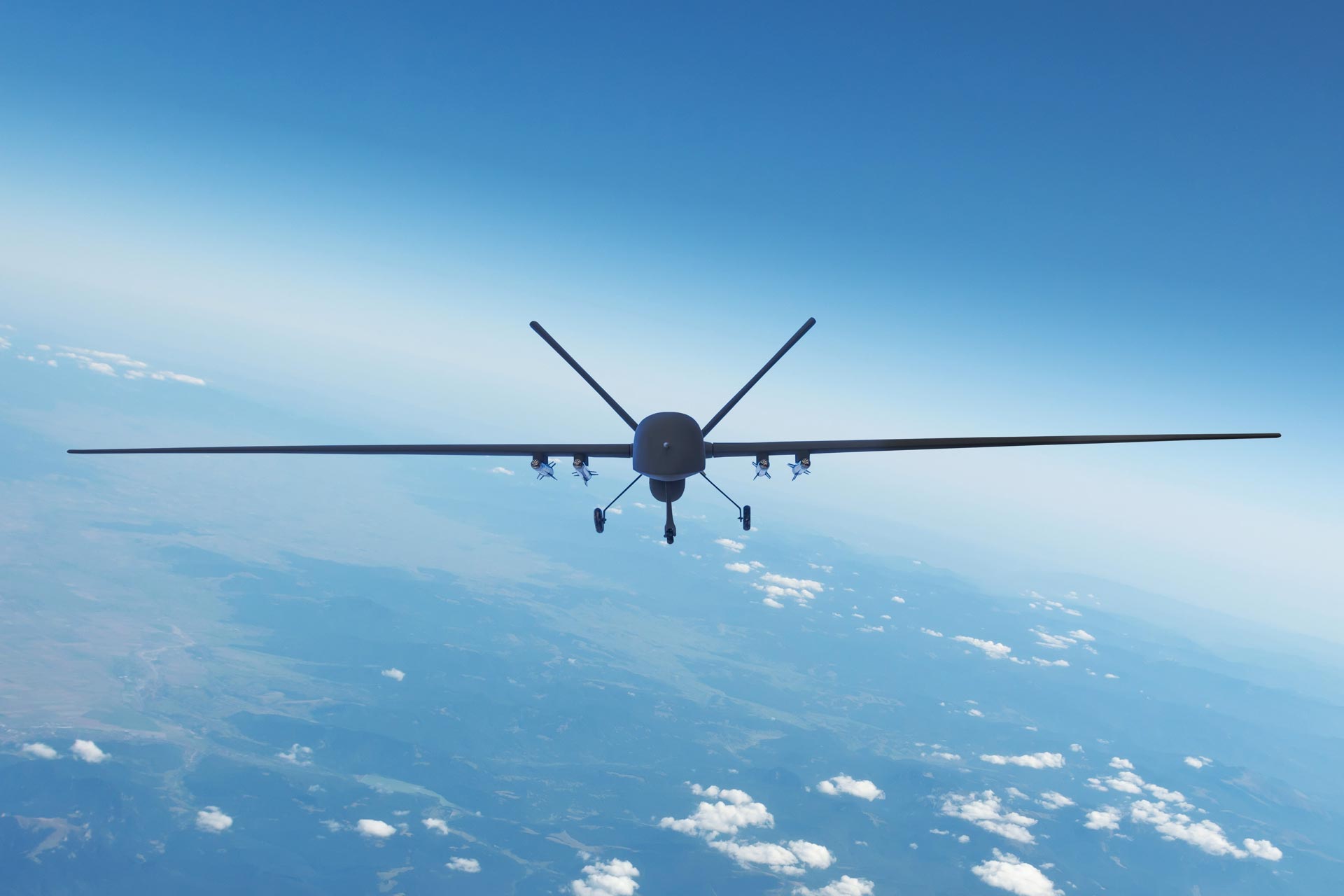-
Business Consulting
Our business consulting specialists offer a comprehensive blend of strategic advisory services. We assess the business, industry, operating model, synergy, skill sets and vision of the organisation and recommend the way forward
-
Digital Natives
Unlock growth with Grant Thornton Bharat's Digital Natives solutions. Customised support for tech-driven companies in healthcare, gaming, and more.
-
Digital Transformation Services
Grant Thornton’s digital transformation services help traditional businesses digitalise their business models with cloud technology, IoT consulting, app development and more DigiTech solutions.
-
Finance Transformation
Using a holistic approach, integrating digitalisation and digital transformation we help clients achieve transparency, control, governance, and faster decision making through real-time data within the business.
-
Human Capital Consulting
Our Human Capital Consulting team harnesses technology and industry expertise to assist in constructing adaptable organisations with transparency, fostering productive and value-driven workforces, and inspiring employees to engage meaningfully in their tasks.
-
Production Linked Incentive Scheme
Production-linked Incentive Scheme by the Indian government is aimed at boosting manufacturing. Grant Thornton Bharat offers varied services across sectors to help businesses avail of this scheme.
-
Public Sector Advisory
Our Public Sector Advisory team has focused streams, aligned with the core priorities of the Government of India. We are responsible for providing innovative and customized technical and managerial solutions.
-
Tech Advisory
We have amalgamated Digital Transformation, IT Advisory & Information Management and Analytics into a new offering, DigiTech.

-
Direct Tax services
Our tax specialists offer a comprehensive blend of tax services, tax litigation, regulatory and compliance services, helping you navigate through complex business matters.
-
Indirect Tax Services
Get tax services by leading tax firm Grant Thornton India. Our indirect tax services include consulting, compliance and litigation services for corporate, international and transaction tax
-
Transfer pricing services
Our transfer pricing services experts provide a range of services from provision of APA services to handling large global assignments including Country by Country reporting.
-
US Tax
At Grant Thornton, we help individuals and dynamic companies deal with US tax laws, which are one of the most complicated tax legislations across the world.
-
Financial Services - Tax
Best financial advisory services, tailored for small and large businesses by the experts having comprehensive knowledge of domestic laws and access to multifaceted tools to provide a valuable results.
-
Financial Reporting consulting services
Our experts have significant hands-on experience in providing IFRS/US GAAP services, end-to-end solutions and support services to fulfil financial reporting requirements.
-
Fund accounting and financial reporting
International operations often lack standardisation and have varied local reporting formats and requirements. Our experts can offer proactive insights, practical guidance, and positive progress and help meet regulatory timeframes.
-
Compliance and Secretarial Services
Our experts can assist in overhauling the entire compliance machinery of the organisation through evaluation of the applicable statutory obligations, monitoring of adequate governance controls, reporting and providing ongoing support.
-
Global People Solutions
As businesses transcend borders, both domestic and global considerations need equal attention. Our interim CFO and financial controller support services help organisations meet the business vision.
-
Finance and accounting outsourcing
Our accounting experts assist organisations in managing their accounting and reporting. Our dedicated Integrated Knowledge and Capability Centre (IKCC), allows us to service both the domestic and global markets efficiently and cost-effectively
-
Compliance Management System
We have automation solutions for you that will allow meeting government requirements and remain diligent, which when failed, can lead to penalties and loss in revenue.
-
Global compliance and reporting solutions
At Grant Thornton Bharat, we meet the challenges of our clients and help them unlock their potential for growth. Our professionals offer solutions tailored to meet our clients’ global accounting and statutory reporting requirements. With first-hand experience of local reporting requirements in more than 145+ locations worldwide, we provide seamless and consistent international service delivery through a single point of contact.
-
Related-party transaction governance
Related-party transactions (RPTs) are common in business structures where organisations engage with their group entities, such as holding companies, subsidiaries, associate concerns, joint ventures, or key management personnel, for various operational or financial purposes.
-
Family Offices & Private Client Services
Grant Thornton Bharat Private Client Services offers tailored advisory for family-owned businesses, focusing on governance, compliance, tax, succession planning, and family office structuring to sustain wealth and preserve legacies across generations.
-
GTMitra: Tax & Regulatory Tool
GTMitra, a specialised tax and regulatory tool by Grant Thornton Bharat, supports multinational businesses in understanding laws and regulations for effective growth strategies.
-
Labour codes
Labour codes solutions help you transition through the new legislation. At Grant Thornton, we help businesses divide their approach to make sure a smooth transition.
-
Alerts
At Grant Thornton India, with the help of our tax alerts, we help to provide updates on how to minimise your tax exposure and risks.
-
Unlocking opportunities: India investment roadmap
The India Investment Roadmap resource is designed to navigate the complexities of Indian tax and regulatory laws, providing seamless guidance and a comprehensive set of solutions to ensure a smooth process for investors aiming to establish or expand their presence in India.
-
CFO Solutions
Our comprehensive suite of solutions for CFOs

-
Cyber
In today’s time, businesses have gone through large transformation initiatives such as adoption of digital technologies, transition to cloud, use of advanced technologies et al.
-
Risk Optimisation
Our Governance, Risk and Operations (GRO) services encompass Internal Audit, Enterprise Risk Management, Internal Financial Controls, IT advisory, Standard Operating Procedures and other services.
-
Risk analytics
Grant Thornton Bharat’s CLEARR Insights is a state-of-the art data analytics platform that will help you in seamless data analysis and efficient decision-making.
-
Forensic & Investigation Services
The team of forensic advisory services experts consists of the best intelligence corporate experts, and fraud risk, computer forensic experts to deliver most effective solutions to dynamic Indian businesses.
-
ESG consulting
Grant Thornton Bharat offers holistic ESG consulting solutions for sustainable business outcomes. With industry expertise and AI technology, we drive long-term value.

-
Transaction Tax Services
Our transaction tax experts understand your business, anticipate your needs and come up with robust tax solutions that help you achieve business objectives ensuring compliance and efficiency
-
Deal Advisory
Unlike other M&A advisory firm in India, we offer deal advisory services and work exclusively with controlled and well-designed strategies to help businesses grow, expand and create value.
-
Due Diligence
Grant Thornton’s financial due diligence services are aimed at corporate looking for mergers and acquisitions, private equity firms evaluating investments and businesses/promoters considering sale/divestment.
-
Valuations
As one of the leading valuation consultants in India, Grant Thornton specializes in all the aspects of the process like business valuation services, financial reporting, tax issues, etc.
-
Overseas Listing
Overseas listing presents a perfect platform for mid-sized Indian companies with global ambitions. Grant Thornton’s team of experts in listings, work closely with clients during all stages.
-
Debt & Special Situations Solutions
Grant Thornton Bharat offers specialist debt and special situations consulting services, including restructuring, insolvency, and asset tracing solutions.
-
Financial Reporting Advisory Services
Grant Thornton Bharat Financial Reporting Advisory Services offer end-to-end solutions for complex financial requirements, including GAAP conversions, IPO support, and hedge accounting advisory, ensuring accurate financial reporting and compliance.
-
Financial Statement Audit and Attestation Services
Grant Thornton Bharat offers customised financial statement audit and attestation services, ensuring impeccable quality and compliance with global standards. Our partner-led approach, technical expertise, and market credibility ensure effective solutions for your business needs.

- Agriculture
- Asset management
- Automotive and EV
- Aviation
- Banking
- Education and ed-tech
- Energy & Renewables
- Engineering & industrial products
- Fintech
- FMCG & consumer goods
- Food processing
- Gaming
- Healthcare
- Urban infrastructure
- Insurance
- Media
- Medical devices
- Metals & Mining
- NBFC
- Pharma, bio tech & life sciences
- Real estate and REITs
- Retail & E-commerce
- Specialty chemicals
- Sports
- Technology
- Telecom
- Transportation & logistics
- Tourism & hospitality
-
 Thought leadership Co-lending in India: Expanding credit access for MSMEsIn today’s rapidly evolving financial landscape, co-lending has emerged as a key enabler of credit expansion in India, facilitating partnerships between banks and non-banking financial companies (NBFCs) to extend credit more efficiently to underserved segments.
Thought leadership Co-lending in India: Expanding credit access for MSMEsIn today’s rapidly evolving financial landscape, co-lending has emerged as a key enabler of credit expansion in India, facilitating partnerships between banks and non-banking financial companies (NBFCs) to extend credit more efficiently to underserved segments. -
 Article Why India’s financial inclusion journey needs to focus on equity and access to creditFinancial services have expanded over a decade, giving millions access to bank accounts and digital payments. But true empowerment needs to reach every corner of the country if growth is to be long-term and sustained
Article Why India’s financial inclusion journey needs to focus on equity and access to creditFinancial services have expanded over a decade, giving millions access to bank accounts and digital payments. But true empowerment needs to reach every corner of the country if growth is to be long-term and sustained -
 Thought Leadership Competitive and sustainable agriculture & food processing in KeralaThe economy of Kerala is primarily driven by the services sector, which contributes 66% to the Gross State Domestic Product (GSDP).
Thought Leadership Competitive and sustainable agriculture & food processing in KeralaThe economy of Kerala is primarily driven by the services sector, which contributes 66% to the Gross State Domestic Product (GSDP). -
 Article Economic Survey 2024-25: Deregulation, investment and innovation for a Viksit BharatIndia's economic growth remains for a steady trajectory with real GDP expected to grow at 6.4% in FY25 and in the range of 6.3%-6.8% in FY26, reflecting resilience despite global uncertainties.
Article Economic Survey 2024-25: Deregulation, investment and innovation for a Viksit BharatIndia's economic growth remains for a steady trajectory with real GDP expected to grow at 6.4% in FY25 and in the range of 6.3%-6.8% in FY26, reflecting resilience despite global uncertainties.
-
India-UK
India-UK

The Beating Retreat Ceremony on 29 January 2022 in New Delhi saw 1,000 swarm drones putting on a stunning show, lighting up the sky and leaving the nation in awe. The show was designed, conceptualised and produced indigenously under the Make in India initiative by Botlab Dynamics.
With a display of 1,000 indigenously produced swarm drones, India became the fourth nation to achieve such a feat, allowing strong foothold in the field of drone technology. The US, Russia and China have also carried out such swarm drone displays in the past.
What is a swarm drone and how is it effective?

A swarm drone is a concept where a large cluster (or many clusters) of unmanned aerial vehicles (UAVs) is flown together in a contested or hostile airspace, to confuse the radar with a much bigger image than the actual target and achieve their assigned objective or other specific missions, including targeted strikes or supporting tactical operations.
These drones work in tandem with each other and are either remote-controlled or operated autonomously with the help of onboard processors. They could be effectively used in the suppression of enemy air defences, destruction of enemy air defences, the simultaneous Suppression/Destruction of Enemy Air Defenses (SEAD/DEAD) roles, distorting the image of assets on enemy radar, detecting the enemy radar sites and relaying information to operators.
Drones within a swarm can carry out a wide range of missions, such as strikes against tanks, infantry combat vehicles, ammunition holding areas, fuel dumps and terror launch pads.
From a global purview
The world is moving at a very fast pace in this space. A few reputed swarm technologies around the world are:
- The French Icarus project
- The Russian Lightning
- The Spanish RAPAZ
- The UK’s Blue Bearswarm
- The UAE/South African N-Raven
- Israel has a number of projects like Sky striker. In May 2021, during its conflict with Hamas, the Israel Defense Forces became the first military to use a drone swarm in combat
- US. Marine Corps is progressing with kamikaze drone swarms, while the Army, Air Force, Navyand DARPA are pursuing separate swarm initiatives, with some services working on multiple projects
- China has a number of swarm programmes
Swarm drones: India and China
China has already made rapid advancements in swarm drone technology. In 2021, the country released a video of a truck-mounted system launching a barrage of swarms. It was the first practical use of such a system on this scale anywhere in the world. The test demonstrated the ability of the whole process, such as the rapid deployment of vehicles, intensive launching, hovering and launching in the air, precise formation, formation change, ground inspection and attack and precision strike.
With regards to India, on the occasion of the 73rd Army Day on 15 January, the Indian Army demonstrated its drone capability, including Kamikaze attacks and strikes using a mothership. In this first-ever demonstration, 75 drones, including quadcopters and bigger hexacopters, were launched from varying heights.
During the display, 13 targets, symbolising hostile armour, dummy mortar positions, troop concentrations, fuel dumps, radar sites, terror hideouts and helipads were struck. The drones were synchronised with satellite feeds and area correlation technologies.
The bigger hexacopters, called the motherships, launched child drones, which oriented and aligned themselves according to the target designations and optimised target trajectory using artificial intelligence algorithms running on the onboard flight computers. The child drones, carrying explosives, then crashed into the target, destroying themselves and the enemy asset – in a typical Kamikaze strike.
Before the child drones commenced the targeting sequence, another team of drones entered the airspace and carried out confirmatory reconnaissance using raster scans and assigned the targets to individual drones to execute pre-programmed offensive missions.
These fully autonomous drones can reach 50 kilometres inside enemy territory and carry out missions targeting the pre-designated hostile assets with high-impact warheads. The drones can strike targets at a range of 100km in a self-destructive assault. The drones were made in collaboration with a Bengaluru-based start-up. What they showcased was just a fraction of the capabilities they have actually brought to the service.
Start-up expertise intervention

However, proper assimilation of the new technologies and developing indigenous tactics will take time. While several drones are already being used for surveillance along the border and in counter-terror operations, the drones displayed during the Army Day parade were highly sophisticated, autonomous and armed UAVs.
The armed forces have signed contracts with Indian defence companies and start-ups under the fast-track process for acquisition of new-age weapons, a move that will see dometic systems delivered to the frontline on a faster pace.
The army has taken the lead in swarm drones, considered as the future of warfare, by placing INR 200 crore order with Indian start-ups to supply a system capable of surveillance, electronic warfare and kinetic attack. Bengaluru-based start-up, NewSpace Research and Tech, has been selected for the contract.
NewSpace Research is also working with Hindustan Aeronautics Limited for a futuristic air-launched swarm drone system called Combat Air Teaming System (CATS).
DRDO display of swarm drones
The Defence Research and Development Organisation (DRDO), in November 2021, showcased an indigenous capability to carry out offensive missions in enemy territory with scores of drones working in assorted formations to identify, encircle and strike targets, with the loitering munitions being developed to meet a key military requirement and keep soldiers out of harm’s way. The capability demonstration came on the opening day of a three-day defence function in Jhansi, linked to the ongoing country-wide celebrations to mark the 75th year of independence.
The drone swarm showcased capabilities related to distributive sensing, decision making, reconfigurable path planning and autonomous attack, indicating that the swarm algorithms have advanced features for niche and distinctive capabilities.
Tech-driven weapons are the key
Conventional warfare is giving way to technology driven weapons and systems. It is a matter of time before the new technology overtakes the existing warfare tactics and the warfare become more tech-driven. In line with the notion, "Victory smiles upon those who anticipate the changes in the character of war, not upon those who wait to adapt themselves after the changes occur," the Government of India and related defence forces are addressing the changing dynamics of war and equipping the nation for the future.
